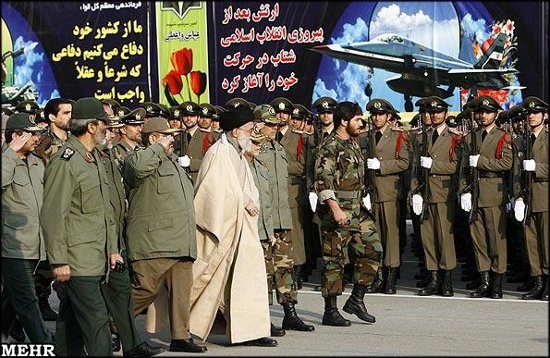
According to the National Council of Resistance of Iran (NCRI), a Paris-based group comprised of Iranian exiles (and some insiders in Iran), Tehran’s Grand Ayatollah, Ali Khamenei, has sanctioned the creation of a new intelligence organization charged with shielding the regime from domestic uprisings.
Hassan Taeb, previously a lead commander of the Basij militia, is heading the Intelligence Organization of the Islamic Revolutionary Guard Corps (IRGC). According to unconfirmed reports, this new unit will report directly to the Grand Ayatollah and will incorporate many other agencies previously organized under Tehran’s Ministry of Intelligence and Security. These seven agencies include:
• The old intelligence directorate of the IRGC, consisting of several pursuit and surveillance units.
• The IRGC cyber defense unit, called the “Control Center for Internet Activities.” This unit is headquartered in the Firouzeh Palace district in the township of Kamali, where the IRGC also has a covert office.
• Select units of the Internal Security Directorate at the Ministry of Intelligence and Security.
• The Security Directorate of the Basij paramilitary force, consisting of a domestic espionage and monitoring network.
• Khamenei’s personal intelligence unit, called “Office 101.”
• Several plainclothes units (which monitor street protests in and around the capital) at the IRGC’s Tehran headquarters.
• The “Sarallah Corps,” an elite infantry unit of the IRGC that commands the police and other paramilitary units around the country.
This bureaucratic shuffle is more than a simple reorganization. Ayatollah Khamenei-with the tacit consent of the IRGC-is reforming a state apparatus with the sole purpose of quelling domestic protests. It also gives Khamenei more consolidated control should continued fissures develop in the the current regime. By filling the ranks of the IRGC with Khamenei loyalists, the Grand Ayatollah is controlling an organization with its hands in many different facets of Iranian society.
Since last June’s disputed presidential election, the IRGC has also gained control over state media by using Mobin, one of the IRGC’s subsidiary companies, to purchase a majority share in the government’s Telecommunication Company of Iran (TCI). With this purchase, the IRGC now controls both the medium and the message of Iran’s news cycle.
One question that has yet to be answered is to what degree the IRGC has autonomy even from the Ayatollah. In a recent news article Alireza Nader, an Iran analyst at the RAND Corporation, observed: “The Revolutionary Guards and security forces are being reorganized not only to provide ultimate control for Khamenei, but for the guards specifically . I question whether Khamenei is the overall or major driver of these changes. The Revolutionary Guards appear to answer to no one.” If Nader is correct, we may see the IRGC take a subtle drift away from both Khamenei and Ahmadinejad. As long as Khamenei fills the ranks of the IRGC with his loyalists, however, this will most likely not be the case.
Are you a dedicated reader of FDD's Long War Journal? Has our research benefitted you or your team over the years? Support our independent reporting and analysis today by considering a one-time or monthly donation. Thanks for reading! You can make a tax-deductible donation here.







